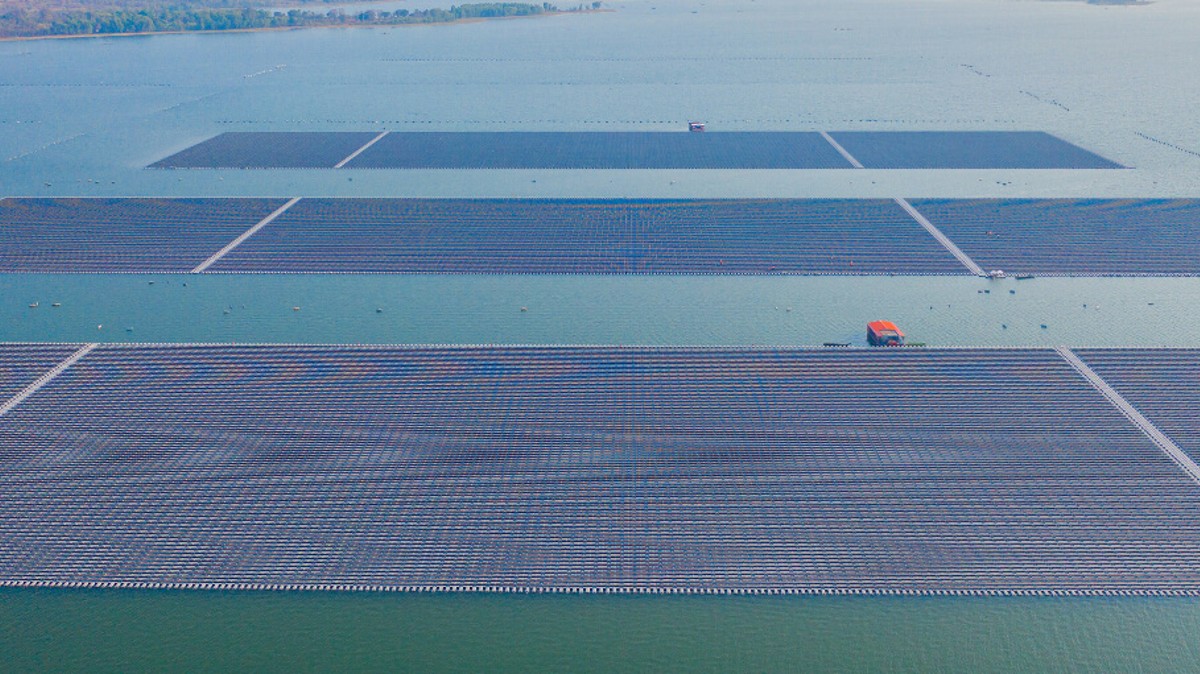
Vast arrays of floating solar panels near the equator could provide unlimited clean energy to countries in Southeast Asia and West Africa, according to new research.
Floating solar in the equator’s waters
Engineering professors at Australian National University have published a new paper in which they explain how some regions on the equator would be ideal for floating solar because the waters there don’t have strong winds and large waves. Tropical storms rarely hit those regions.
The researchers assert that floating solar in those waters could generate up to a massive 1 million TWh per year. They note in an article in The Conversation that “that’s about five times more annual energy than is needed for a fully decarbonized global economy supporting 10 billion affluent people.”
The waters are categorized as calm if the waves are smaller than 6 meters and winds are weaker than 15 meters per second. The calmest waters are in and around Indonesia and equatorial West Africa, near Nigeria. So floating panels installed in those waters wouldn’t need strong, costly engineering defenses.
The Indonesian region, for example, has “about 140,000 square kilometers [54,054 square miles] of seascape that has not experienced waves larger than 4 meters [13 feet] – nor winds stronger than 10m per second – in the past 40 years.”
Offshore solar in Indonesia alone could generate about 35,000 terawatt-hours (TWh) of solar energy a year, according to the paper, which is similar to the country’s current global electricity production of 30,000 TWh per year. And because Indonesia has a high population density and limited ecosystems that shouldn’t be disturbed, floating solar as a source of energy could be a viable solution.
The scientists have calculated that Indonesia would need 25,000 square kilometers (9,653 square miles) of solar panels to support an “affluent Indonesia after full decarbonization of the economy using solar power.”
Electrek’s Take
If wind and wave patterns don’t get altered too drastically by climate change, putting floating solar in waters near the equator could be a creative and clever solution to provide power to regions with large populations that don’t have a lot of land to work with. Of course, the developers would need to pay careful attention to avoid causing damage to marine life and fishing.
What do you think of this idea? Let us know in the comments below.
Top comment by Vince Wolf
Every reservoir in the world should have floating solar to do two things--produce power and reduce evaporation which will be sorely needed as temperature continue to rise.
Read more: The largest floating solar farm in North America is officially online
Photo: DNV
If you’re considering going solar, it’s always a good idea to get quotes from a few installers. To make sure you find a trusted, reliable solar installer near you that offers competitive pricing, check out EnergySage, a free service that makes it easy for you to go solar. It has hundreds of pre-vetted solar installers competing for your business, ensuring you get high-quality solutions and save 20-30% compared to going it alone. Plus, it’s free to use, and you won’t get sales calls until you select an installer and share your phone number with them.
Your personalized solar quotes are easy to compare online and you’ll get access to unbiased Energy Advisors to help you every step of the way. Get started here. –ad*
FTC: We use income earning auto affiliate links. More.





Comments